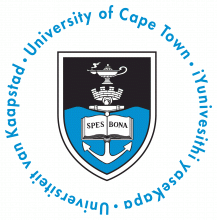Browse the full list of the world's top-ranked universities in 2016-2017
With the exception of China and India, BRICS and developing nations generally perform poorly in this year’s ranking.
Just one Brazilian university makes the top 400 – down from two last year – and, in total, one-third of its representatives drop to a lower band.
Despite the Russian government’s aim to secure five institutions in the world top 100 by 2020, just one university makes the top 300, compared with four in last year’s list. Nine of its 24 universities slip.
South Africa’s performance is more mixed. The University of the Witwatersrand joins the University of Cape Town in the top 200 for the first time, but four others’ rankings decline, largely owing to lower scores for reputation.
Part of this decline is down to the expansion of the rankings this year. For the first time, 980 institutions have been included, up from 801 in last year’s list, making it the most competitive ranking to date.
Ten countries make their debut: Algeria, Bulgaria, Costa Rica, Croatia, Georgia, Kuwait, the Philippines, Sri Lanka, Tunisia and Venezuela. Many of these new institutions have landed between 200th and 800th place – the section traditionally dominated by BRICS and emerging economies – although it is worth noting that Brazil and Russia each have 11 new entries.
Despite these caveats, it is clear that these nations are not improving as rapidly as developing countries in Asia.
Francisco Marmolejo, the World Bank’s lead tertiary education specialist, says that the most “remarkable accomplishment” in Latin America in recent years has been the dramatic increase in higher education attainment. The number of university students in Chile and Brazil increased by 78 per cent and 60 per cent respectively between 2005 and 2012, according to figures from the Organisation for Economic Cooperation and Development.
However, Marmolejo says that the key challenge for the region going forward is ensuring that this access is “equitable” – currently most students come from high socio-economic backgrounds – and improving the quality and relevance of education.
He adds that the region has much to learn from Asia, in particular the rapid internationalisation of some institutions in the continent and the successful partnerships between universities and industry. He references Asia’s top university, the National University of Singapore, as a prime case study.
“They launched partnerships with institutions in other parts of the world; they made a tremendous effort in attracting global talent to the institution; they made a clear and very effective effort in putting together a much more flexible curriculum; and they did a very good job in properly diversifying the higher education system,” he says, noting that NUS’ focus on research complements neighbouring institutions’ polytechnic training and technical degree programmes.
But he stresses that it is important to take into account individual countries’ circumstances and contexts, questioning whether, overall, Singapore would provide a “replicable” model for other nations.
Claim a free copy of the World University Rankings 2016-2017 digital supplement
“Brazil is a completely different game,” he says. “It’s a much larger country with a huge history of limited access to higher education.”
Central and Eastern European (CEE) countries are also weak performers in the ranking, largely because of low levels of institutional income.
Just one university in the Czech Republic, Charles University in Prague, makes the top 600, down from six last year, while three of Romania’s four representatives slip to a lower band.
Michael Dobbins, junior professor for policy analysis at Goethe University Frankfurt, says that the major drawback for CEE nations is a lack of funding and, despite advances in this area, their economies “function to a large extent as extended workbenches for Western companies”.
“This has two major effects. Since governments are extremely interested in attracting Western capital, they are forced to keep taxes and labour costs very low. This leaves little leeway for greater education expenditure.
“This is compounded by the fact that EU accession requires them to adopt the thousands of pages of EU laws, most of them having nothing to do with education. This is extremely cost-intensive and negatively impacts educational expenditure,” he says.
“Second, the multinational companies operated in CEE [countries] have little incentive to invest in skills or education. This is what some authors have called the ‘low-skill equilibrium’. This, of course, plays into the phenomenon of brain drain from the East to West, in particular since EU accession.”
Another issue has been the “massive expansion of higher education” after the collapse of communism, he says, which saw several nations attempting to restore the Humboldtian model of “academic self-rule” after 1990.
However, he says that these countries “only restored what I call Humboldt’s skeleton”, meaning that the structures of professorial chairs, academic senates and academic interest bodies were reignited but universities did not have the capacity to fulfil Humboldt’s vision of top-class research or pay decent salaries to scholars.
Despite these shortfalls, Dobbins says that higher education in the region must be given credit for playing a crucial role in the democratisation of the former communist block, leading to “policies of inclusion and opening universities to working-class children”.
He recommends that CEE countries implement competitive state research grants, which would boost publication output and ensure “more utilitarian linkages between university output and socio-economic demands”.
“The German Excellence Initiative may be a good model for CEE universities to copy to promote top-class research, while some of the recent reforms in France, which promote university-industry collaboration, would perhaps help overcome the idea of universities as secluded ivory towers and bastions of professorial oligarchies,” he suggests.
Marmolejo adds that despite their rise in the ranking, Asian countries such as China could learn lessons from other emerging economies. He cites academic freedom in particular as an issue that the country must address.
“Some of the international partnerships that have been established by universities in China and some Middle Eastern countries are [caught up with the] issue of academic freedom,” he says. “Of course, that complicates [their goal] of improving higher education.”
To raise your university’s global profile with Times Higher Education, please contact branding@timeshighereducation.com
To unlock the data behind THE’s rankings, and access a range of analytical and benchmarking tools, contact data@timeshighereducation.com
POSTSCRIPT:
Print headline: Bigger list sees BRICS struggling to keep pace
Register to continue
Why register?
- Registration is free and only takes a moment
- Once registered, you can read 3 articles a month
- Sign up for our newsletter
Subscribe
Or subscribe for unlimited access to:
- Unlimited access to news, views, insights & reviews
- Digital editions
- Digital access to THE’s university and college rankings analysis
Already registered or a current subscriber?












